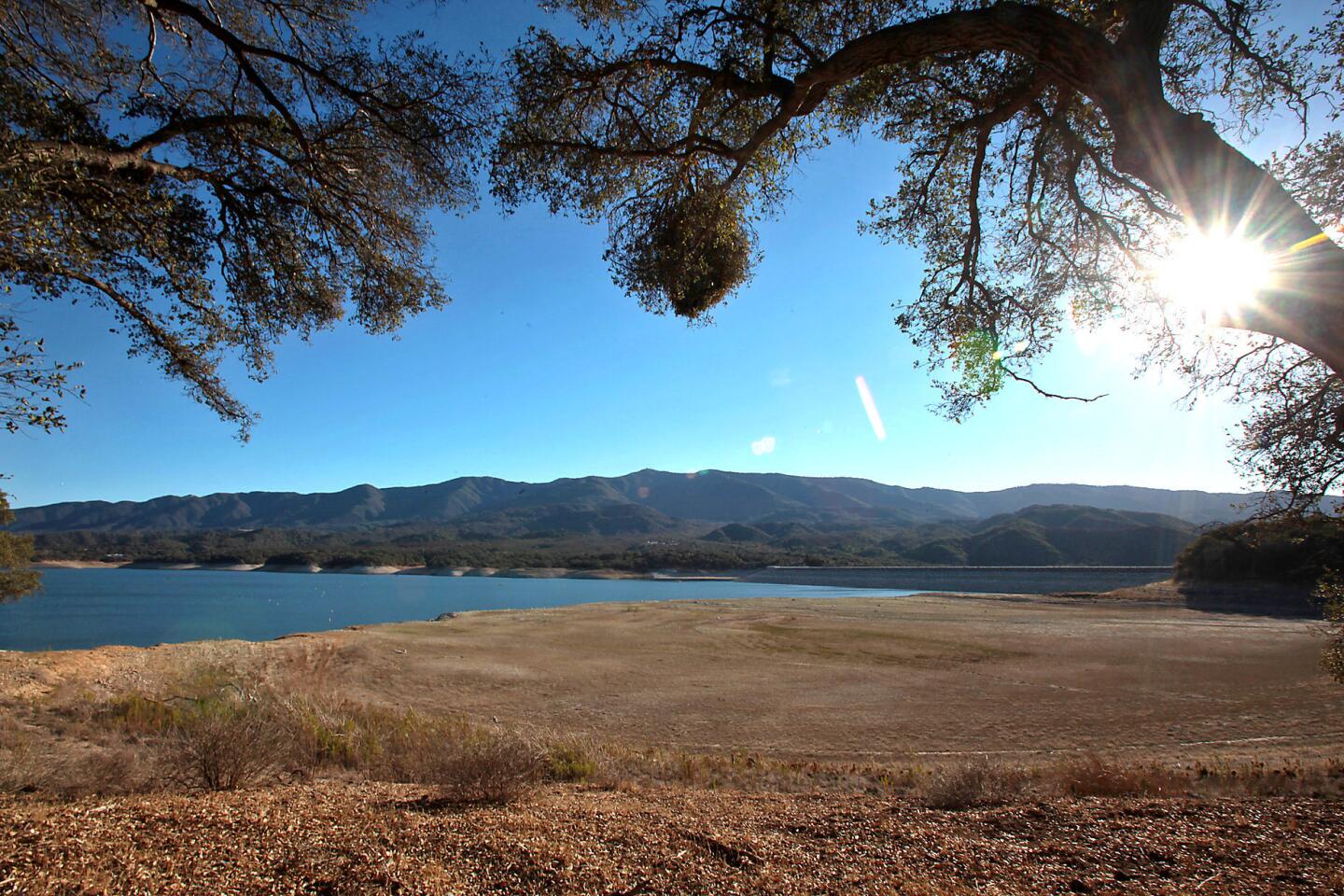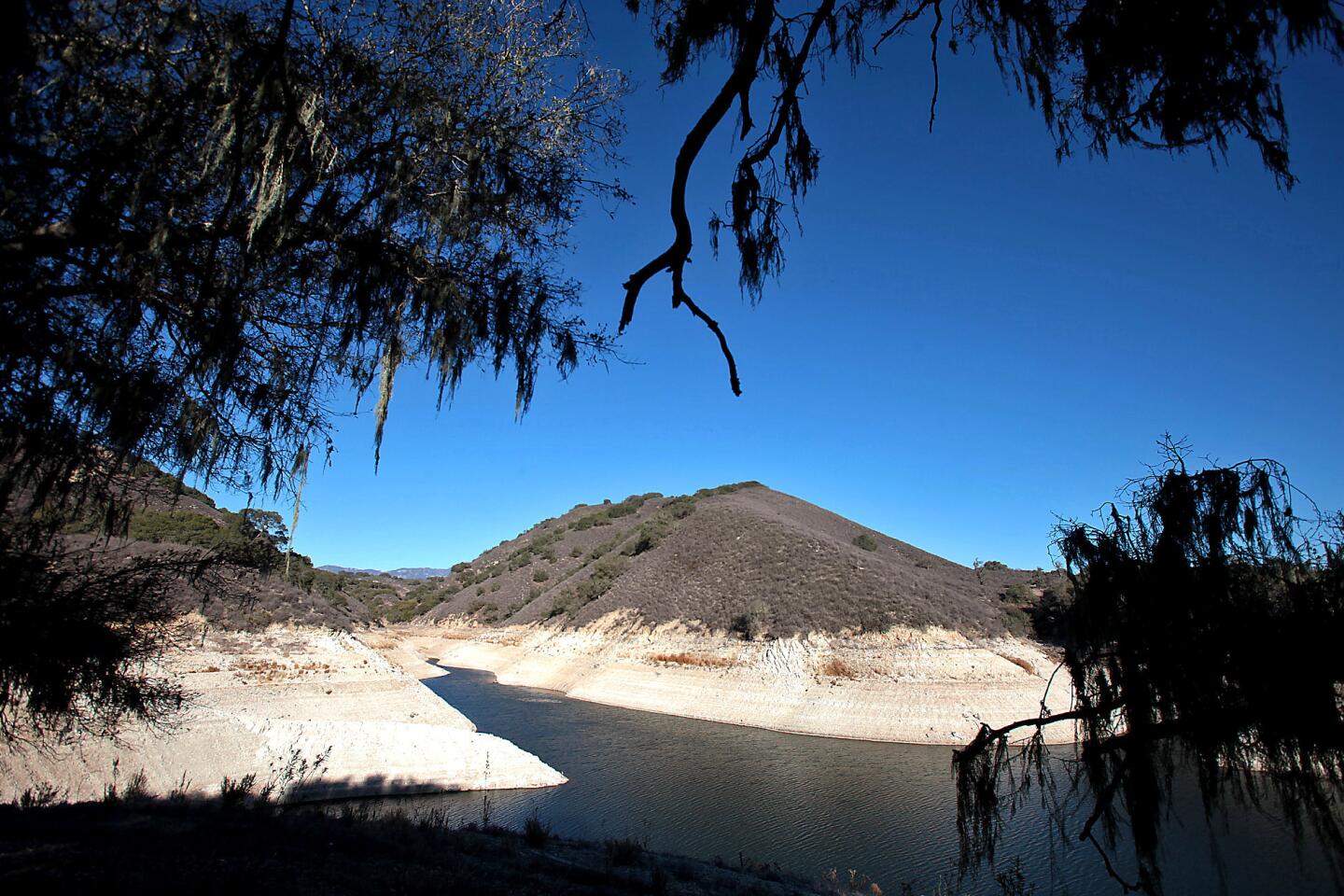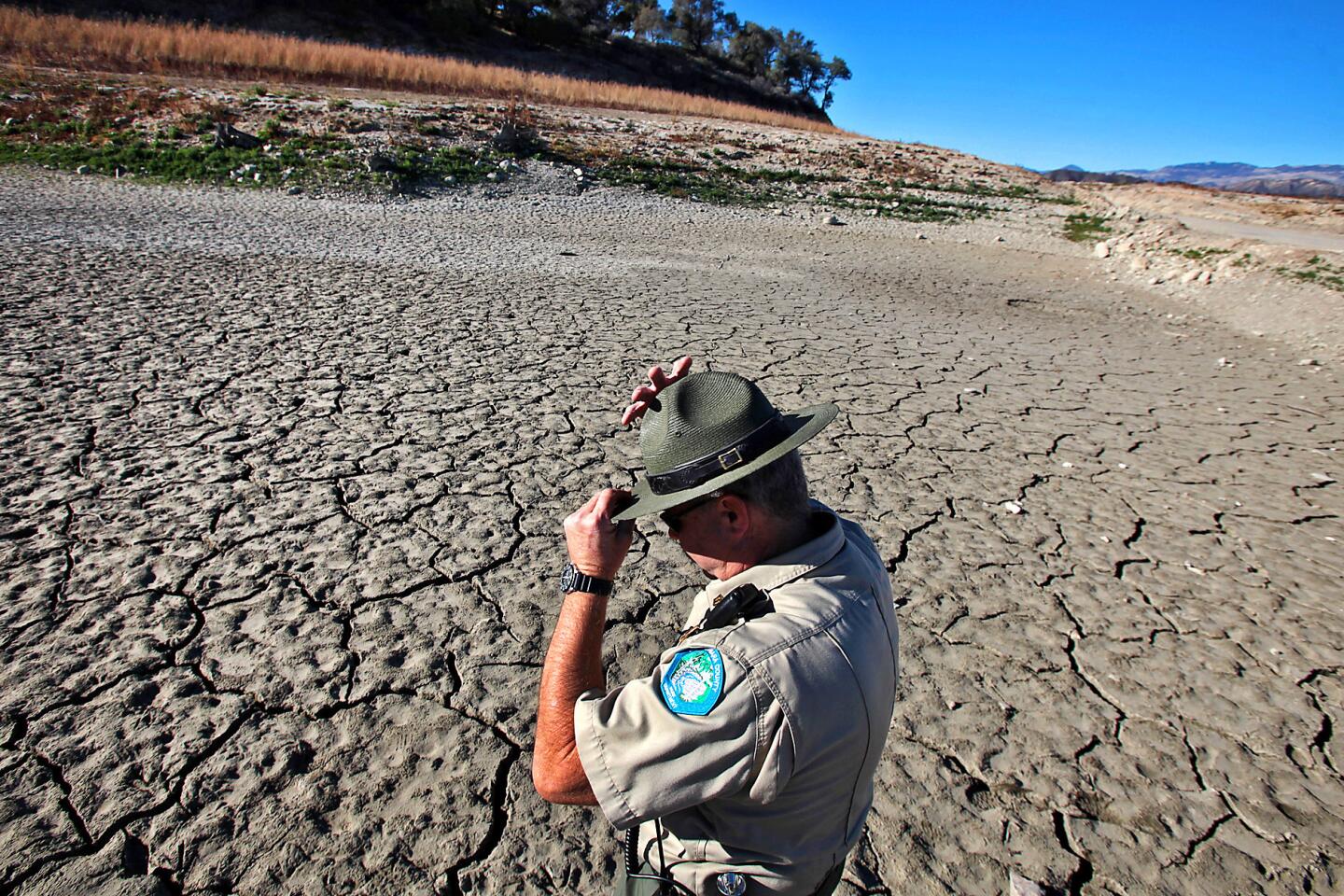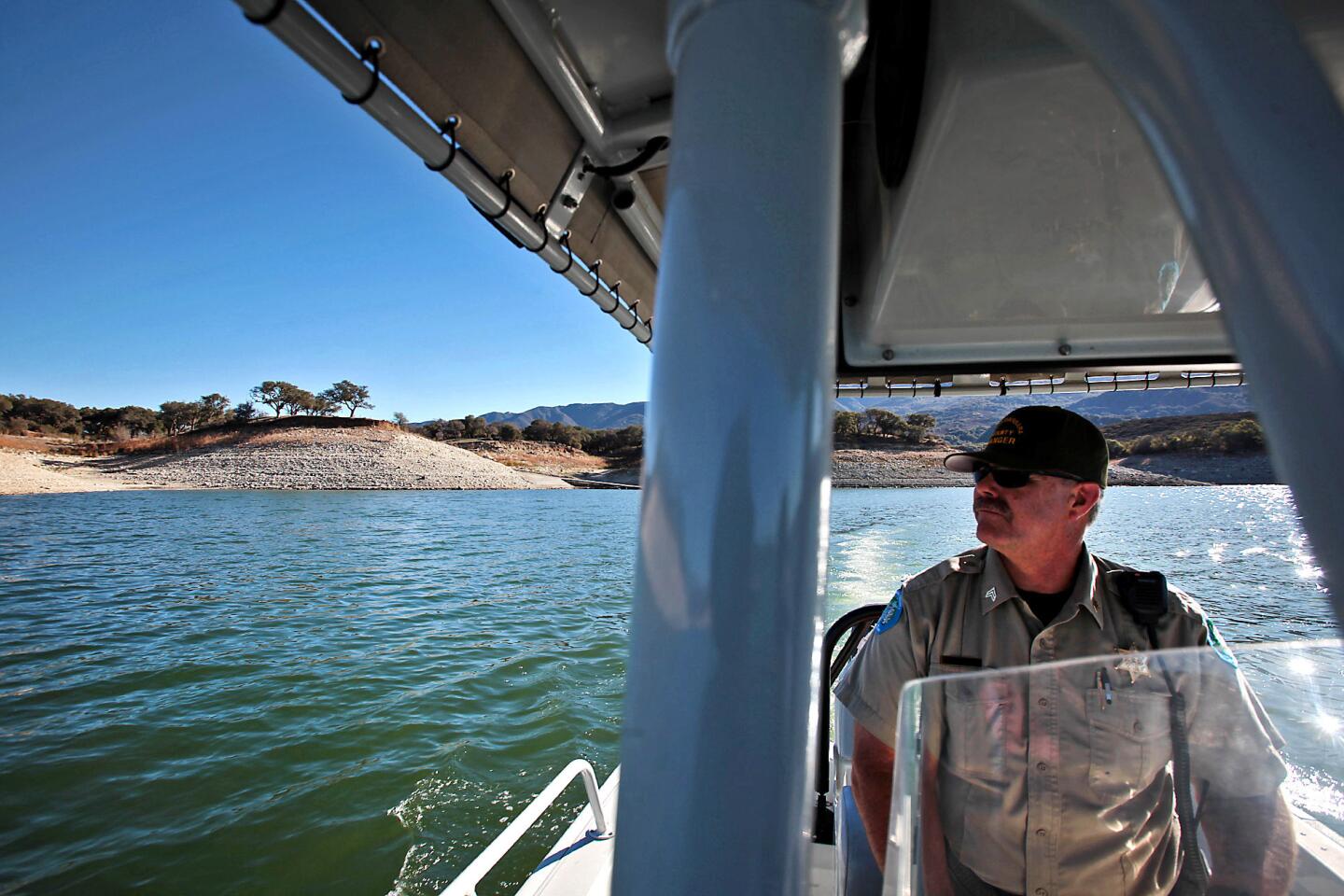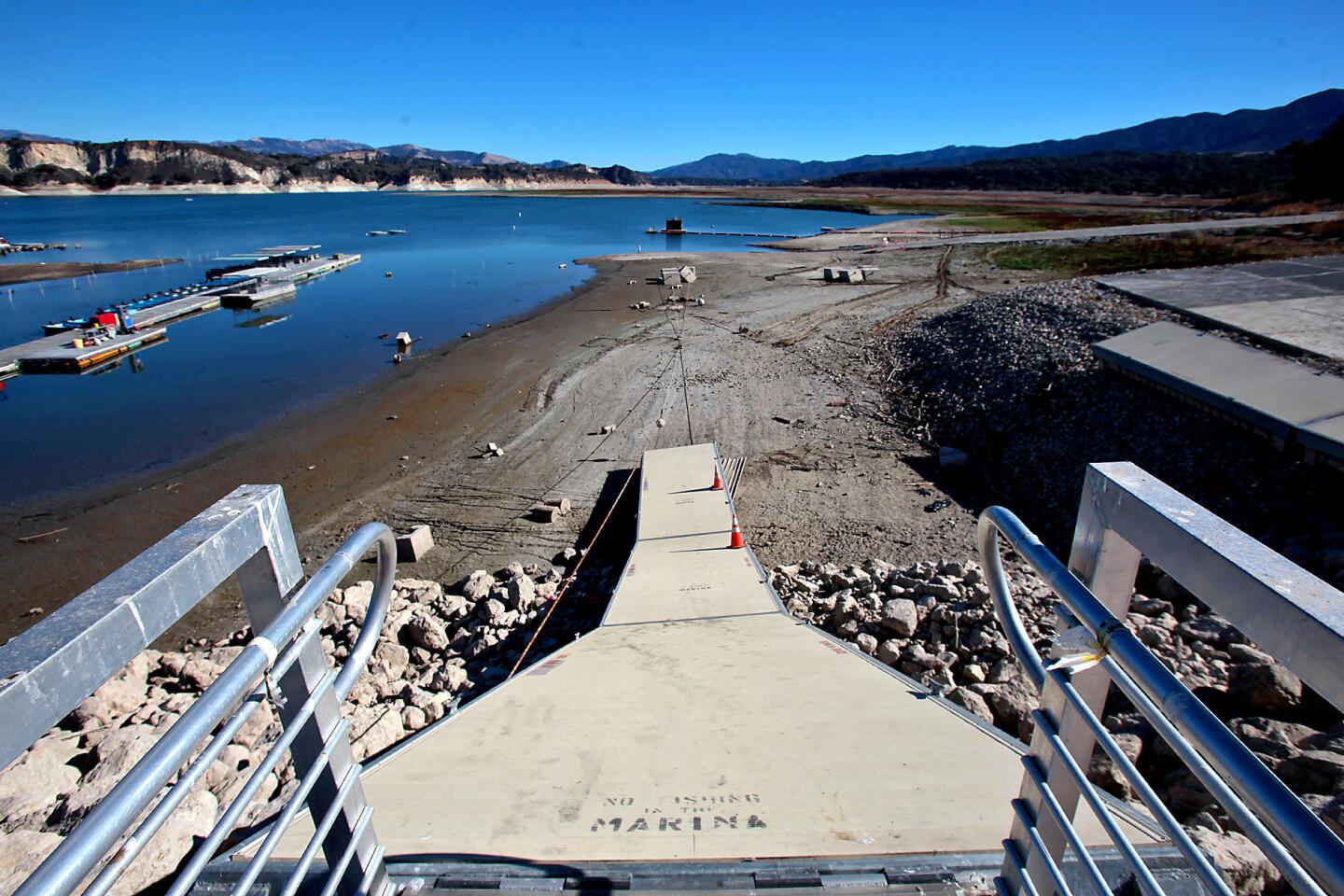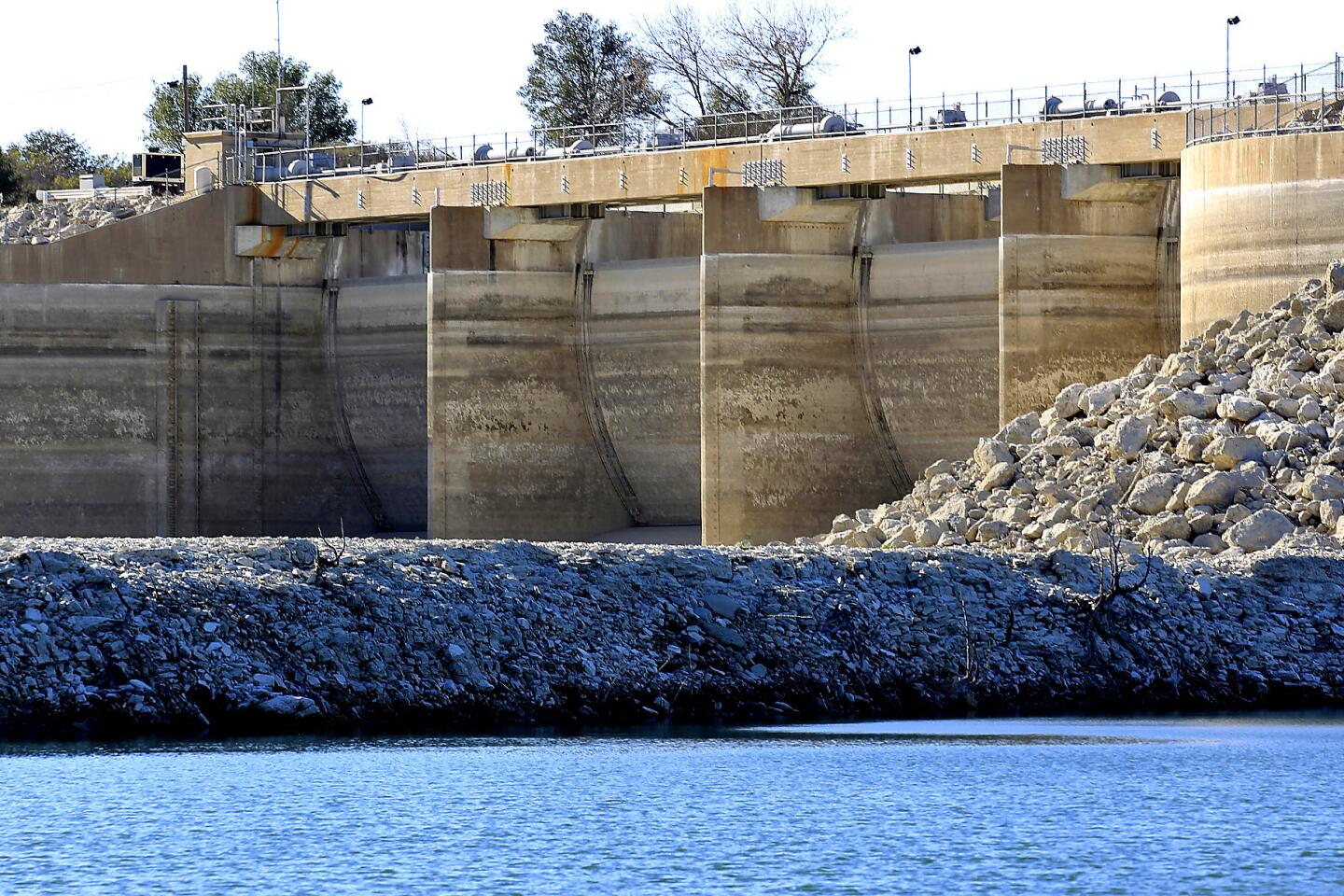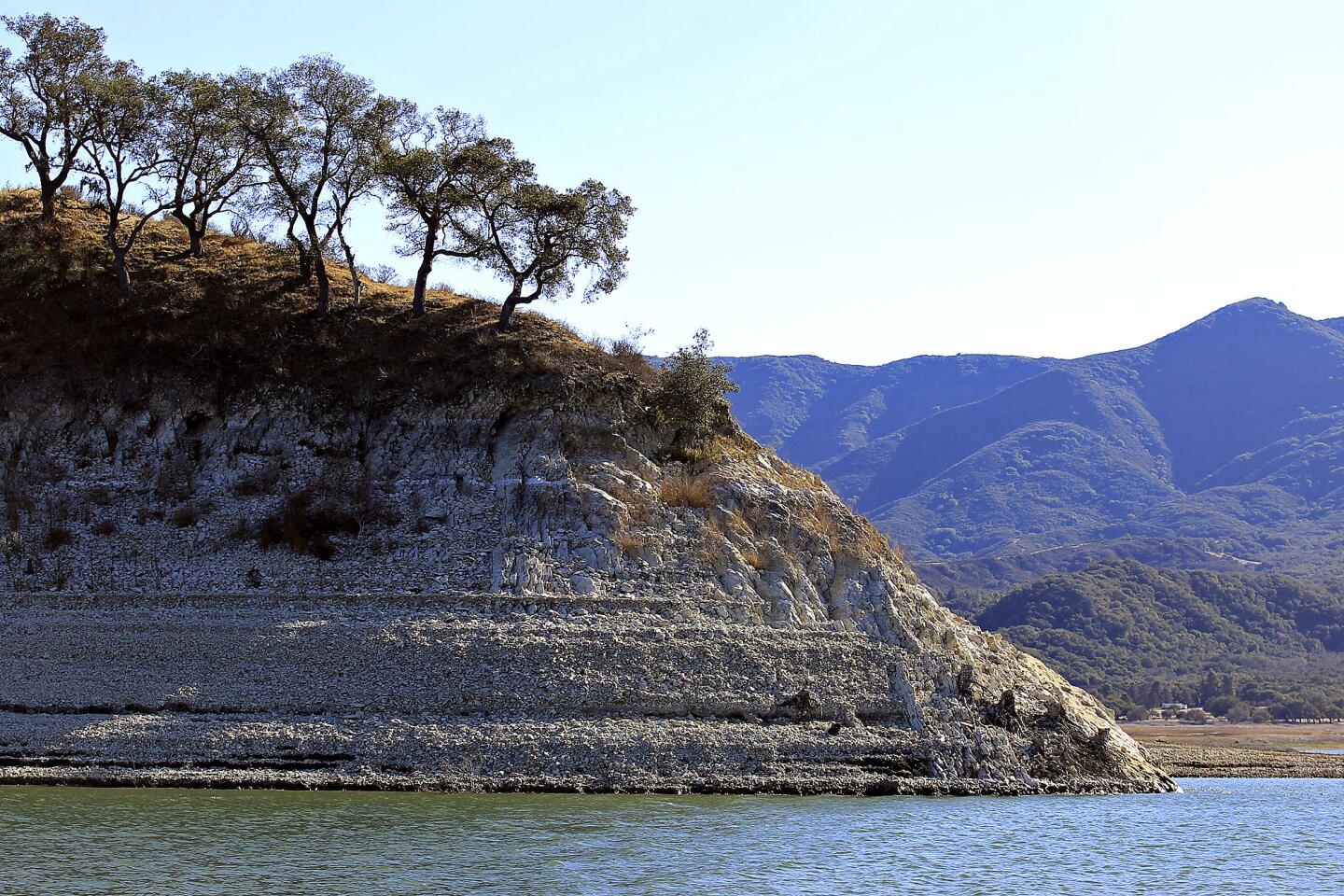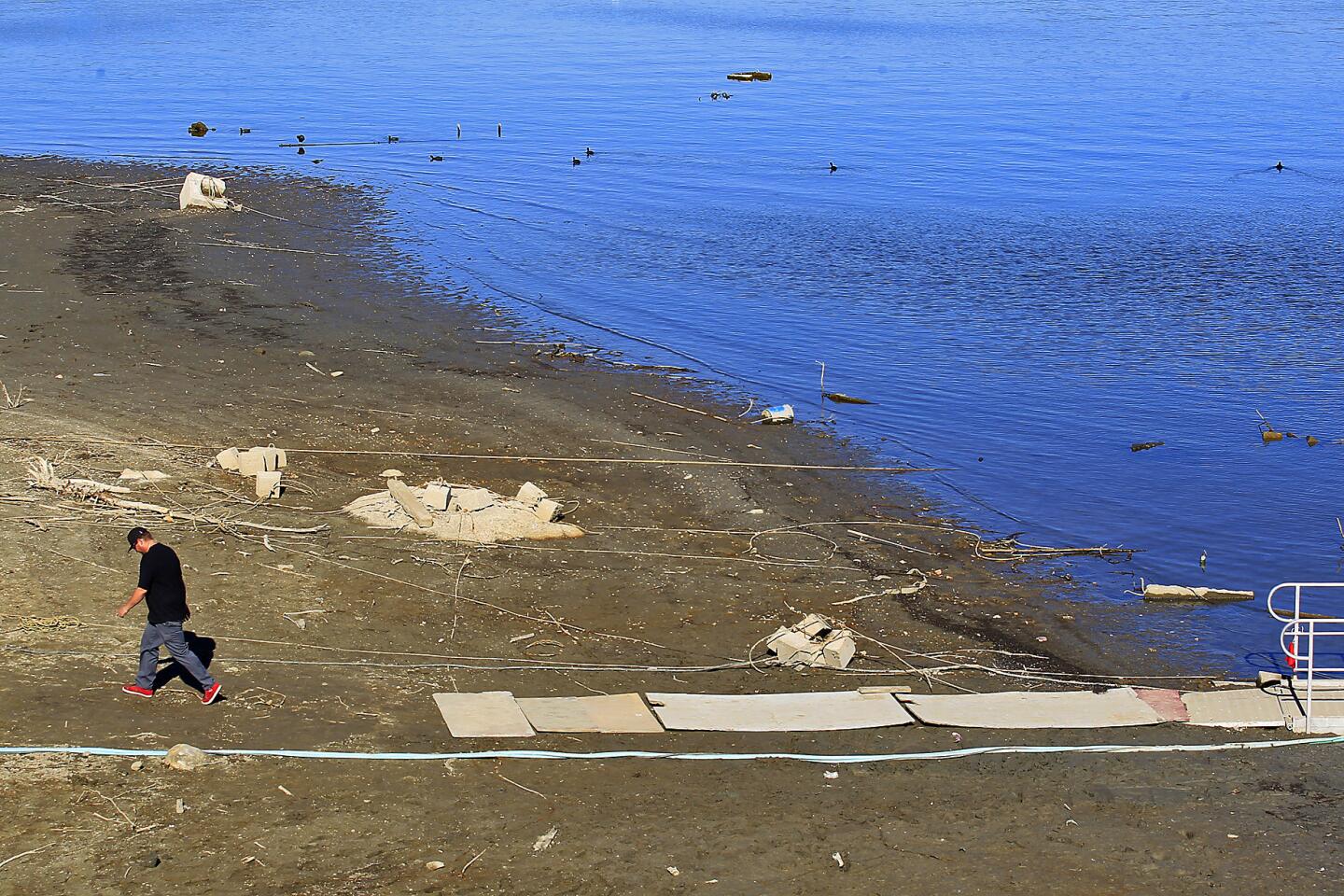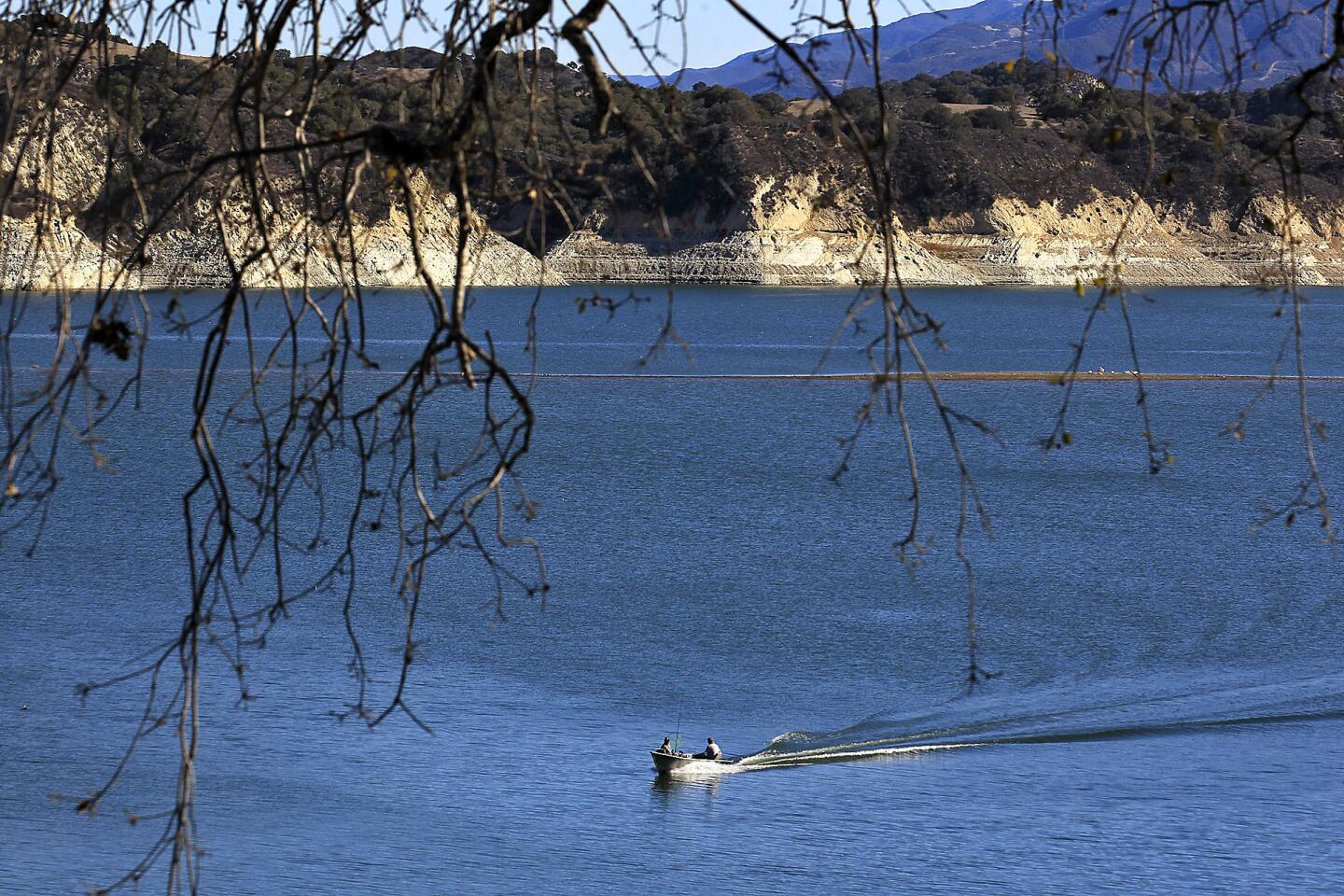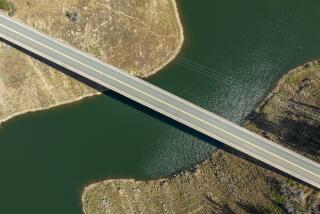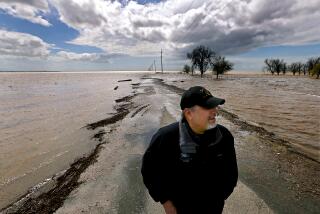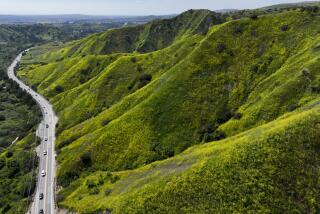Cachuma Lake, a crystalline mountain resource, is disappearing
- Share via
CACHUMA LAKE RECREATION AREA, Calif. — When Jeff Bozarth retired after 20 years as a police officer and signed up as a park ranger here last spring, he knew what to expect and relished every bit of it.
Hidden in the folds of the Central Coast mountains, Cachuma Lake featured the largest campground in Santa Barbara County and one of the area’s most popular outdoor playgrounds.
Here, Bozarth knew, was 190,000 acre-feet of crystalline water that splashed into clay washes and lapped at primeval rock formations. There would be bobcats, wild pigs, migrating grebes who acted out an elaborate courtship dance. Hawks would ride the thermals — plumes of air that jetted up the cliffs and allowed the birds to stay motionless in the air without rising, without falling, without even flapping their wings.
“But I didn’t expect this,” Bozarth said.
Cachuma Lake, the source of drinking water for 200,000 people on the southern coast of Santa Barbara County, from Goleta to Carpinteria, is disappearing. It is becoming a startling emblem of California’s debilitating drought, with little hope that conditions will improve any time soon.
Bozarth walked to the base of Bradbury Dam, because you can do that sort of thing right now, and stabbed the toe of his boot into the dirt. The dam was finished in 1953, built to rein in the water of the Santa Ynez River, forming a reservoir — Cachuma Lake — for a booming stretch of California.
In years past, the spot where Bozarth was standing was under 30, 40, even 50 feet of water. It wasn’t all that long ago that Cachuma “spilled” — filled to the brim, to the point where millions of gallons of clean, fresh water was released through the dam’s gates and cast into the sea, a display of surplus that is laughable today.
That was only three years ago. Now, said Tom Fayram, Santa Barbara County’s deputy public works director, “it’s just empty.”
Earlier this month, Gov. Jerry Brown declared an official drought emergency, urging California residents to cut water use by 20% and directing state agencies to launch a conservation campaign and hire extra seasonal personnel to confront a heightened risk of wildfires. It was a formal recognition of something that had become terribly evident: California is dry as dust.
Not only did numerous places in California suffer their driest year on record in 2013; it wasn’t even close. In San Francisco, the driest year was 1917, when 9 inches of rain fell; in 2013, it was about 51/2 inches. San Luis Obispo County typically receives almost 2 feet of rain each year; that fell to 41/2 inches in 2013, obliterating the previous record of 7 inches, set in 1898.
According to the U.S. Department of Agriculture, 62.7% of the state has suddenly tumbled into “extreme” drought conditions. That’s up from 27.6% at the start of the calendar year — the year that began less than four weeks ago. The agency’s new drought map shows a crimson splotch stretching from Orange County in the south to Mendocino County in the north.
“We’re right in the heart of it,” Fayram said.
Cachuma Lake, which is at 39.7% of capacity, has been in trouble before. In 1990 and 1991, water levels were even lower. “We were that close to being out of water,” Fayram said, holding two fingers a centimeter apart. Back then, some residents were catching excess shower water in buckets and using it to flush the toilet.
The difference, Fayram said, was that in those days, the law of averages worked. Eventually, the assumption went, it was going to rain — and it did. The “miracle March” rains of 1991 pulled Cachuma Lake out of a dire state, and then a healthy rain year in 1992 filled it back up.
Now forecasters don’t see any rain on the horizon.
“And we don’t need a good rainstorm,” Fayram said. “We need a good rain year. That’s not within view right now.”
Fayram and other water officials along the southern coast of Santa Barbara County have begun preparing for the shortages to come. There is discussion, for instance, of tapping more aggressively into groundwater sources and the California Aqueduct.
Those decisions lie ahead in the coming weeks and months. For now, all Bozarth sees is dust — land, acres and acres of it, littered with sun-bleached clamshells, that is suddenly re-emerging from the depths as Cachuma Lake fades away.
Chunks of the past are strewn about the former lake bed as the water recedes — overturned rowboats, anchors, buoys, maritime cables, even fishing lures that snagged on branches decades ago.
Arrowhead Island, long an iconic land structure in the middle of the lake and, some claim, one of the best bass-fishing spots in the state, “isn’t an island anymore,” said Bozarth, the recreation area’s supervising ranger. “I can walk there now,” he said.
Rangers had to scramble to move their floating boathouse before it became stranded on land. New, smaller lakes have been created as the water has receded. One was full of carp before it dried up altogether. The carp died on a bed of cracked clay. The buzzards ate the carp.
In 2008, officials opened a new, slanting boat ramp, which was used heavily by pleasure-boaters and fishermen. Today, you can walk to the end of the ramp, where you should be under water. There, it dangles in the air, 60 feet above the lake’s new surface. Rangers are preparing to use the remnants of an old highway, submerged since the Eisenhower administration, as a new boat ramp.
Bozarth tried gamely to explain the impact of the drought by boat, but he didn’t get as far as he wanted. An alarm on the console erupted time and again, warning him that he was entering dangerously shallow water.
“It’s still a beautiful place. I love it. I’m so glad I work here,” he said. “But this is sad. It’s just sad.”
More to Read
Sign up for Essential California
The most important California stories and recommendations in your inbox every morning.
You may occasionally receive promotional content from the Los Angeles Times.
